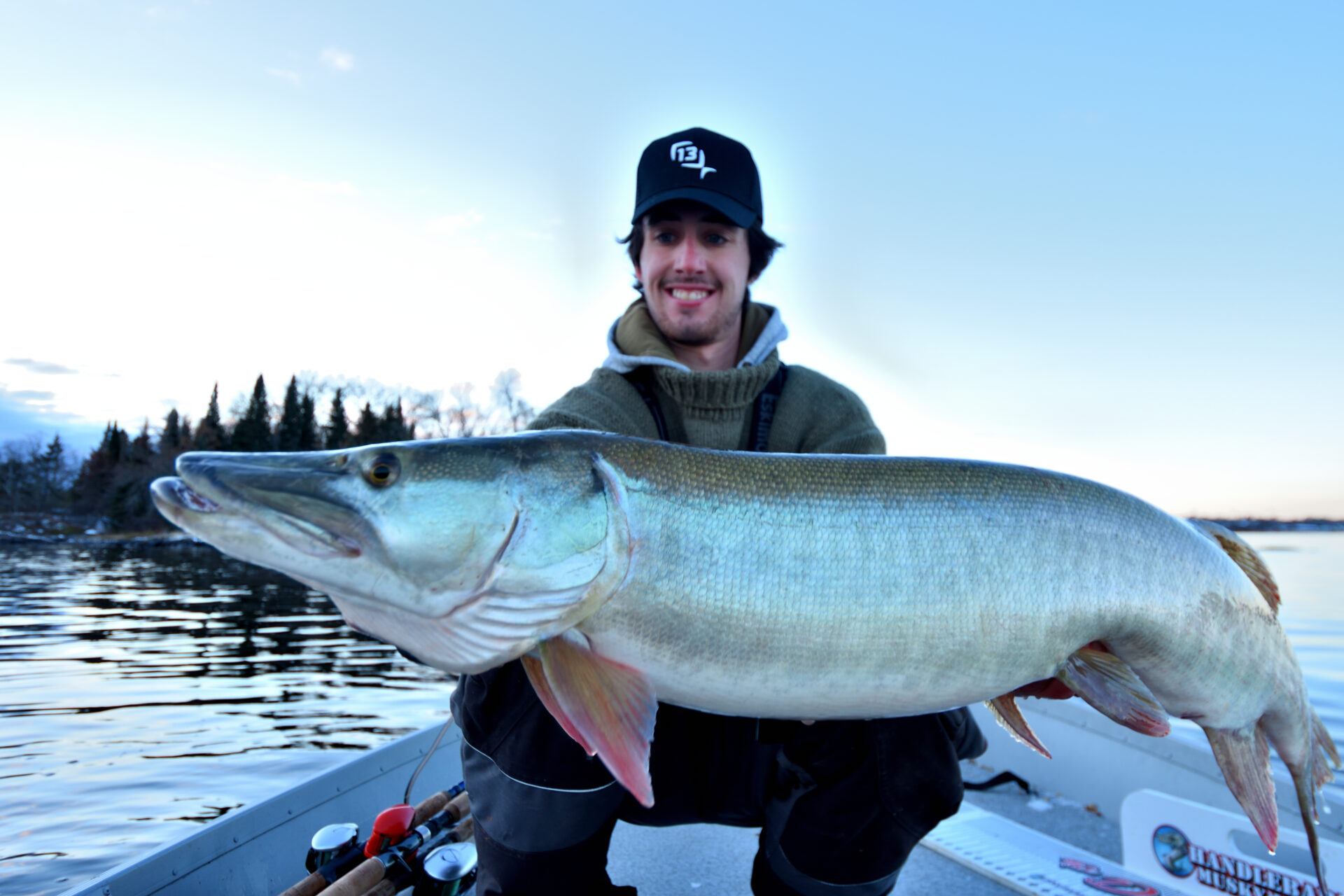TURNOVER IS A PROCESS
In fall, as water temperatures drop, lakes change gradually
Advertisement
I had a really fun evening recently talking about muskie fishing with the folks at the Musky Insider. It was hosted by Minnesota muskie guide and guru Josh Borovsky who got the class started by asking me about the current conditions up here in Northwestern Ontario. I mentioned that the water temperature had dipped permanently below the magic 60°F (16°C) mark. This tends to signal the time when musky summer home ranges break down, and the fish tend to move and wander, until it reaches 40°F (5°C), when they settle into their winter home ranges.
I also mentioned that with the water temperature now hovering around 55°F (12°C), fall turnover was well underway. To get the mental muskie juices flowing, I also explained that fall turnover is a process, not a one-time event. So, if folks were waiting for the temperature to reach 40°F (5°C) at which water is most dense, they were going to miss out on almost two months of the best fall fishing. That initiated several follow-up emails and text messages from folks wanted to know more, so let me explain.
Advertisement
Instead of calling it “fall turnover,” a much better way of thinking about what is happening in our lakes, rivers, reservoirs, pits and ponds right now is viewing it in the science context as the elimination of thermal resistance to mixing.
Now, ask yourself, what has been stopping the water in your favourite lake (assuming it is deep enough to stratify in the summer) from mixing? In other words: what has hindered the warm layer of surface water (the epilimnion) from blending with the deep cold basin layer (the hypolimnion)? It is the thermocline, of course, which sets up as a barrier in the summer months. You can’t see it, but it’s like a glass ceiling—a thermal barrier— that resists water from the surface mixing with water down deep.
When I was lake trout fishing in August, I used a water thermometer to take a temperature reading at every five feet, from the surface down to about 70 feet deep. You can watch me do it HERE and as you’ll see, the surface water temperature was 73°F (23°C). And it remained that temperature five, 10 and even 15 feet down. But at 20 feet deep, the temperature was 70°F (21°C) and at 25 feet deep it was 62°F (16°C). Now, here is where things really got interesting. At 30 feet deep, the water temperature had dropped to 54°F (12°C), which signalled the top of the thermocline. And then it got colder below that barrier.
Advertisement
The key point is that today, on that very same lake, with the surface temperature running 55°F (13 °C), the thermocline has been eliminated, so there is nothing to stop the surface water from mixing with the lower reaches of the lake. And with the elimination of the thermocline, there is nothing prohibiting the warm water fish in the lake, like walleye, smallmouth bass, northern pike and muskies from going deep and nothing hindering the cold water lake trout, speckled trout, whitefish and herring from coming shallow. As a matter of fact, the lake trout are spawning along shorelines and shoals as we speak.
In addition, I was out muskie fishing yesterday and while I was casting a number of underwater points, reefs and structures, I noticed fish several times below the boat. I dropped baits down to them and caught walleyes and smallmouth in water as shallow as 12 feet, to as deep as 28 feet. And several times off sharp, breaking slopes I noticed dense schools of ciscoes and whitefish in 30 to 40 feet of water.
Advertisement
This decline in water temperature will continue this way for the rest of the fall, and for certain, we’ll reach a point later in the season when the entire water column is 40°F (5°C)—the temperature at which water is most dense and turns over most easily.
But, as I said at the beginning, if you wait for that moment in time, you’ll miss out on two months of great fishing. Because turnover is a process—not an event!
Good fishing everyone.

